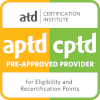MindEdge
Cybersecurity for Healthcare Professionals
Cybersecurity for Healthcare Professionals
Regular price
$933 USD
Regular price
Sale price
$933 USD
Unit price
per
Couldn't load pickup availability
Ever wondered about the intersection of healthcare and cybersecurity? Dive deep with us, where we mesh stethoscopes with firewalls. Protect patient data with top-tier strategies and tech expertise. After all, even in a world of scrubs and screens, security is paramount.
Course Duration:5 hours
Credits:
CEU Credits: 0.5
AMA PCM CEU Credits: 0
PDU Credits: 0
HRCI Credits: 0
SHRM Credits: 0
CFRE Credits: 0
ATD CI Credits: 5
ACE Credits: 0
Course Description
In this course, managers are introduced to essential information security principles and concepts. These concepts are critically important in the healthcare sector as a data breach can have far-reaching consequences for individuals and organizations. Beyond financial losses and the embarrassment of having personal information exposed online, a security breach in healthcare can result in a patient becoming seriously injured or killed.
This course is designed to help managers navigate crucial cybersecurity concepts as applied to HITECH and HIPAA-covered entities. Learners will explore the reasons why breaches occur, the motivation of attackers, and how to protect Personal Health Information (PHI) while it is in use, in storage, and in transit across a network.
Learning Outcomes
Discuss the importance of information security/cybersecurity as it pertains to healthcare entities
Explain why certain security trends are increasing and how the top internal and external threats can be mitigated
Demonstrate how the CIA triad and security governance tools can be applied in an organization
Illustrate various healthcare laws and standards and employ the most appropriate compliance resources for one's organization
Describe physical security controls that enhance security
Assess various access and identity management controls, including knowledge, possession, and inherence-based techniques
Compare and contrast administrative, technical, physical, and audit controls
Differentiate between cryptosystems, ciphers, digital signatures, and hashes
Demonstrate how risk management principles and frameworks are combined to reduce risk
Explain how you would create a continuity of operations plan (COOP) and incorporate an effective disaster recovery plan (DRP)
Apply incident management, forensic investigation, and audit principles
Prepare for common cybersecurity attacks through security awareness training and mitigate these using best practices
Testimonials



